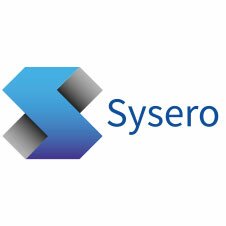Driving legal transformation: Four crucial steps to driving change
The pandemic has made one thing clear: change is inevitable for the survival of law firms. Prior to the arrival of COVID-19, law firms were already on the path towards a more digital-driven approach. However, the rapid transition to remote work, coupled with a rise in cyber security risks, has accelerated the need for digital transformation in the modern firm.
For many law firm leaders, this has meant rapidly implementing and adopting digital tools for communication and collaboration – both internally and externally. From empowering agile working through cloud-based collaboration to prioritising self-service for clients, legal leaders are uncovering new ways to use technology to transform the way their firm works.
Faced with rapidly shifting market conditions, evolving work practices and changing client demands, the need for change has never been greater for law firms. However, many law firms are failing to adapt. According to the Altman Weil’s 2020 Law Firms in Transition report, only 22% of firms have attempted to systematically re-engineer their work processes. So, it’s not surprising that less than 2% of law firm leaders strongly agree that law firms have changed as much as is needed, which has invited clients to look elsewhere for legal services.
Yet change is required. Today’s legal clients are squeezing margins, requesting faster turnaround times and greater use of automation. If law firms fail to adapt, their clients will go elsewhere. While barriers remain to the technological disruption of law, there are several steps you can take to help shift the trajectory of your firm.
Improve efficiency of legal service delivery
The 24/7 on-demand consumer culture has permeated the legal sector, and today’s clients demand greater value, efficiency and transparency from their legal providers. One of the main reasons firms fail to deliver this is due to internal bureaucracy. Slow, time-consuming and manual processes consume a considerable amount of internal time and significantly reduce responsiveness.
That’s why many firms are turning to legal workflow automation to streamline internal processes and speed up legal transactions. A prime example is legal self-service portals. These secure, cloud-based portals leverage workflow automation to enable clients to quickly generate firm-approved documents on a self-service basis. For example, an in-house lawyer may use its firm’s self-service portal to quickly draft a new NDA by simply filling out an online form.
This cloud-based self-service approach enables firms to provide on-demand services to their clients, wherever they may be working. One firm that’s already put this into practice is leading Finnish firm Castren & Snellman. The firm’s Signe Document Automation Service, powered by Sysero, provides clients with a document automation portal where they can draft new documents quickly and effortlessly using automated texts.
Learn and improve as you go
Digital transformation is an ongoing and iterative process. Whether you’re rolling out new technology systems or re-engineering processes, success depends on adoption. So, it’s crucial to include key stakeholders early in the process, and give them the opportunity to provide feedback along the way.
By incorporating continuous feedback and testing throughout your digital transformation journey, you can proactively identify issues as they arise. An iterative approach also can help you achieve early successes and build momentum for the project both internally and with clients.
Build on successes
Once you find success, build upon it. Systematise effective new methods by replicating them in other parts of the firm. One proven way to do this is by starting with a pilot practice. By piloting a new technology programme with a single practice group, you’ll be able to test and perfect the project with a small group, before rolling it out to the larger firm. Additionally, pilot groups can
provide valuable insights and feedback, which can help ensure the programme meets the needs of the firm’s lawyers. Once your programme is successfully launched in one practice, find ways to replicate your success in other areas of the firm.
iManage recently found success with this approach when implementing a customisable Sysero solution for its Partner Portal, Implementation Portal and Cloud Services Portal. Implementing Sysero to improve the partner experience in one area of the business quickly led to the realisation that the technology could be used in similar ways to power greater efficiency and effectiveness in other areas of the business. The result: an elevated partner experience using a single, comprehensive workflow system.
Commit to your change
As with any large business initiative, commitment is key to success. Follow the transformation process through to the end and celebrate the outcomes. Maintaining attention to commitments over time is critical to ensuring your new capabilities are translated into a sustainable competitive advantage.
Be sure to continue to educate and engage key stakeholders to drive adoption. As lawyers and clients learn more about your programme, they’ll discover new tools and features that can help them be more productive, efficient and deliver higher quality service.
As the legal landscape continues to change, it’s imperative that modern firms change with it. If you’re looking to bring greater efficiency, value and agility to the way your firm works, get in touch with us to learn how Sysero can help bring your firm into the future with legal automation workflow.



